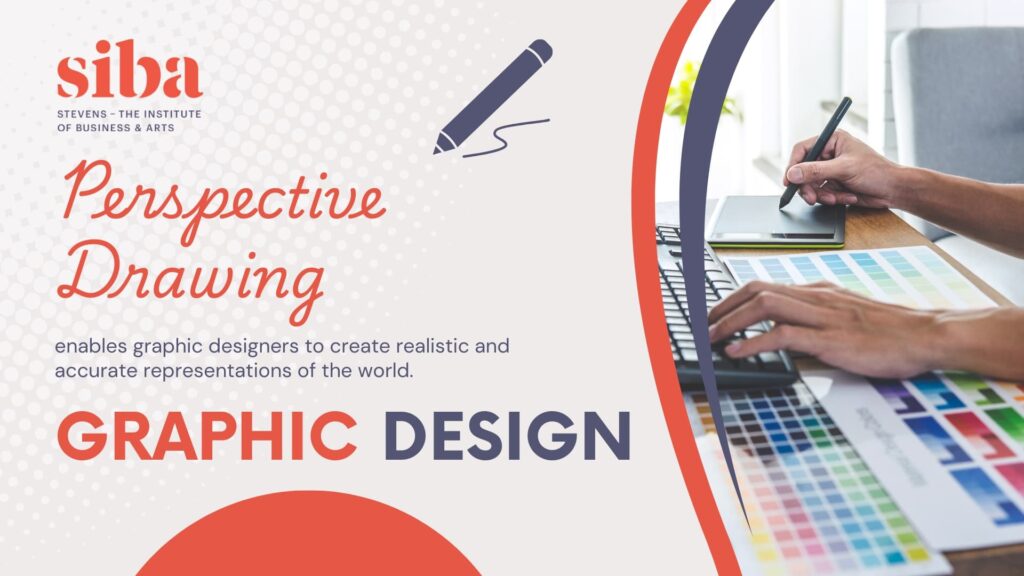The Importance of Studying Perspective Drawing: Unlocking the Secrets of Realism
As a student of graphic design, you may have encountered the concept of perspective drawing. However, you may be wondering why it is essential to study this fundamental skill. Perspective drawing is a crucial aspect of creating realistic and visually appealing representations of the world around us.
Understanding Perspective Drawing
Perspective drawing is a method of creating a two-dimensional representation of a three-dimensional space on a flat surface, such as paper or canvas. It involves using lines, shapes, and other visual elements to create the illusion of depth, distance, and volume. Perspective drawing is based on the principle that parallel lines appear to converge at a vanishing point on the horizon, creating a sense of depth and distance. By mastering perspective drawing, artists can create realistic and convincing representations of the world, from simple still-life compositions to complex architectural designs.
Why is it Important to Study Perspective Drawing?
Studying perspective drawing is essential for several reasons:
- Realism and Accuracy: Perspective drawing enables graphic designers to create realistic and accurate representations of the world. By mastering perspective, graphic designers can convey a sense of depth, distance, and volume, making their work more convincing and engaging.
- Communication: Perspective drawing is a universal language that can be used to communicate ideas, concepts, and designs to others. Whether you are an architect, engineer, graphic designer, or artist, perspective drawing is an essential tool for conveying your vision to clients, colleagues, or audiences.
- Creativity and Expression: Perspective drawing is not just about creating realistic representations; it is also a means of expression and creativity. By mastering perspective, artists can experiment with different styles, techniques, and mediums, pushing the boundaries of what is possible.
- Career Opportunities: Studying perspective drawing can lead to a wide range of career opportunities, from architecture and engineering to graphic design and fine art. By acquiring this skill, you can enhance your job prospects and become a more versatile and valuable professional.
- Improved Observation and Perception: Studying perspective drawing requires artists to observe and understand the world around them. By paying attention to the way lines, shapes, and forms interact, artists can improve their observation and perception skills, leading to a deeper understanding of the world and its complexities.
Applications of Perspective Drawing
Perspective drawing has numerous applications in various fields, including:
- Architecture: Perspective drawing is used to create detailed and accurate representations of building designs, allowing architects to communicate their vision to clients and colleagues.
- Engineering: Engineers use perspective drawing to create technical drawings and diagrams that illustrate complex systems and mechanisms.
- Graphic Design: Graphic designers use perspective drawing to create visually appealing and engaging designs for advertisements, posters, and other visual materials.
- Fine Art: Perspective drawing is used by fine artists to create realistic and convincing representations of the world, from landscapes to still-life compositions.
- Film and Animation: Perspective drawing is used in the film and animation industries to create detailed and accurate storyboards, animatics, and concept art.
Tips for Mastering Perspective Drawing
If you are interested in studying perspective drawing, here are some tips to get you started:
- Practice, Practice, Practice: The key to mastering perspective drawing is practice. Start by drawing simple shapes and lines, and gradually move on to more complex compositions.
- Use Reference Images: Use reference images to help you understand the way lines, shapes, and forms interact in the real world.
- Experiment with Different Media: Try drawing with different media, such as pencils, pens, and charcoal, to find the one that works best for you.
- Learn from Others: Study the work of other artists and designers who have mastered perspective drawing. Analyze their techniques and try to incorporate them into your own work.
- Be Patient: Mastering perspective drawing takes time and patience. Don’t get discouraged if your drawings don’t turn out as expected at first. Keep practicing, and you will eventually see improvement.
In conclusion, studying perspective drawing is essential for any artist, architect, or graphic designer who wants to create realistic and visually appealing representations of the world. By mastering perspective drawing, you can improve your observation and perception skills, enhance your creativity and expression, and open up a wide range of career opportunities. Perspective drawing is an invaluable skill to acquire, and with practice and dedication, you can become proficient in this fundamental aspect of art and design. So, take the first step today and start exploring the world of perspective drawing. With persistence and patience, you will unlock the secrets of realism and take your artistic skills to the next level. Take a look at our Graphic Design curriculum and get started on your path as a Graphic Designer today!
Learn more about all of our programs in Fashion Development and Merchandising, Business Administration, Graphic Design and Interior Design. Our team of experienced staff are ready and willing to help you refine your skills and build you up to reach your potential in your selected area of study. Reach out to our team today for more information! Your career and professional life begin at Siba!

